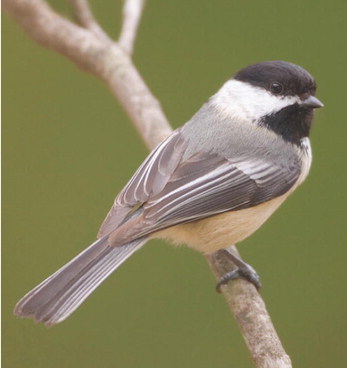Exploring Nature
Let us pay homage to the chickadee, a small bird with a big personality and one of the regulars, along with titmice and cardinals, at my backyard bird feeder.
I’m told the Carolina chickadee has a call that goes “chick-a-deedeedee- dee.” I don’t think I have ever heard one call.
This is an acrobatic bird that can feed upside down a well as right side up. Of all birds, it is the one most likely to eat seeds from your hand. It weighs about a half ounce.
Harold Osborne wrote a poem about this bird: I think that I shall never see/A bird quite like a chickadee/His constant chatter, his wee black cap/ Bridge o’er the unbridged language gap.
Chickadees are found across the United States and Canada into Alaska. The two most widely distributed are the Carolina and the black-capped varieties.
It is quite easy to attract these birds to your yard since they’ll eat almost anything. Their preferences include black-oil sunflower seeds, suet, peanut butter mixed with cornmeal or flour, and peanuts. They will accept food from tubular feeders with perches, window trays, hopper feeders and plastic spheres with seed holes. They’ll also sometimes drink from hummingbird feeders.
Chickadees nest in holes in trees or stumps and will also adopt birdhouses. The female lays six to eight eggs which are speckled with reddish brown. Within two weeks, the young are ready to leave the nest. Their diet consists primarily of insects and spiders, but includes seeds and berries. In addition to the Carolina variety, Texas also hosts the mountain chickadee, which has a distinctive white eyebrow stripe through the black cap above each eye. It is found in the Guadalupe and Davis Mountains.

Attracting chickadees to your yard is easy, as they are happy eating just about anything. Photo from Metro Creative






